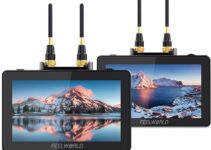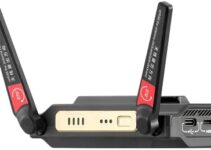Digital sound broadcasting (DSB) is a better technology than FM and has many advantages. However, it is unavailable to most Africans but is accessible in South Africa and Tunisia.
Kenya’s ICT regulator, the communications authority (CA), has announced plans to pilot digital sound broadcasting (DSB) anytime from September 2023. DSB is a technology that uses digital signals to transmit audio content. It is a more efficient use of spectrum than traditional analog broadcasting.
According to the regulator, which hosted a media workshop highlighting its mandate and plans for the ICT industry, DSB will be useful in tackling the issue of limited FM broadcasting frequencies.
This is important because sound broadcasting is a key source of information, education, and entertainment in Kenya. 98% of homes in the country have access to devices that receive sound broadcasts, with nearly 200 licensed broadcast services. However, frequency allocations for FM are close to saturation, meaning there is no more room to add new FM stations. Therefore, DSB provides an opportunity to introduce new sound broadcasting services in these areas.
FM is also an older technology and is marred by several issues. As said, FM broadcasting airwaves are becoming saturated, leading to increased interference and poor signal quality. The lack of capacity for new services is also a problem. With so many stations already on the air, there is no room for adding new ones. The difficulty of innovating and offering new and unique services is another problem, not to mention the relatively poor audio quality of FM broadcasting.
Kenya has already developed a framework for digital sound broadcasting to pave the way for the launch. The regulator mentioned that it is getting a budget to purchase all the necessary equipment for DSB pilot tests. Consumers will also be asked to purchase new receivers capable of processing DSB signals. However, the regulator will not phase out FM signals because they are still important to Kenyans who prefer consuming news and entertainment on their transistor radios. DSB receivers are also capable of processing FM signals as well.
Read also: Kenya’s ICT regulator lifts the lid on 5G spectrum license fees
Digital audio broadcasting (DAB), the most widely used type of digital sound broadcasting, is being tested in Tunisia and South Africa. Tunisia, for instance, began using the technology in 2008. In 2010, it installed additional transmitters, covering 25% of the population. In 2019, four more transmitters were added, covering 51% of the population. In 2020, coverage increased to 71%. The North African country aims to have 98% coverage by the end of the year. Sudan has also expressed interest in deploying digital sound broadcasting to its people.
It remains to be seen how Kenyans will respond to the new technology because they will want to use their FM receivers for longer. The regulator has also not mentioned how it plans to sensitise the government to avail DSB receivers. The cost of rolling out the service could also be high, which is one reason it has taken so long to launch it. Lastly, some digital sound broadcasts will be premium services, meaning they will attract additional costs to consumers who are used to FM, which is free.
What do you think about our stories? Tell us how you feel by taking this quick 3-minute survey.


